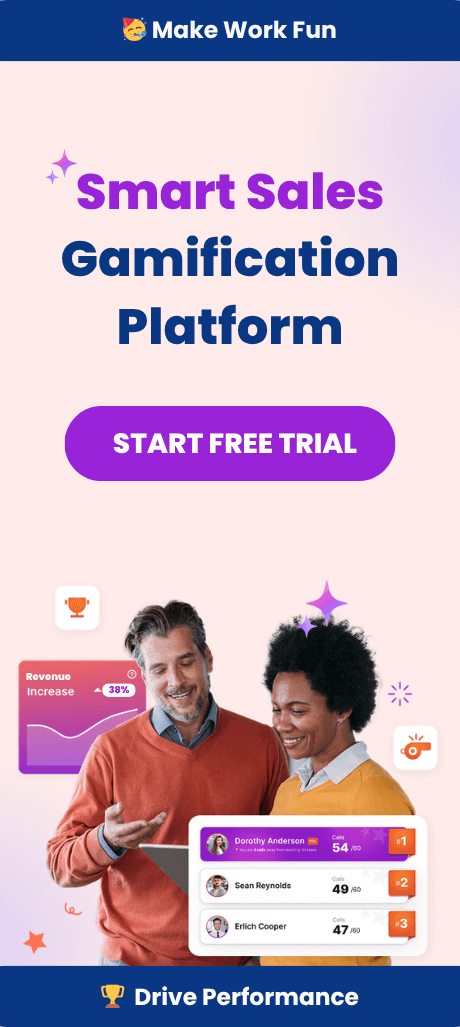In today’s competitive job market, employee recognition is no longer optional—it’s essential. Employees want to feel valued for their contributions, and companies that fail to recognize their efforts risk high turnover, decreased productivity, and a disengaged workforce. According to a Gallup study, organizations with effective recognition programs have 31% lower turnover rates and experience a 14% boost in productivity. Yet, many businesses still struggle to implement meaningful, consistent recognition strategies.
Recognition goes beyond the occasional pat on the back or an annual performance review. It must be timely, specific, and aligned with company goals to create a lasting impact. Forward-thinking companies use AI-driven platforms like Spinify to automate, personalize, and optimize recognition efforts, ensuring employees feel valued in real-time. This article explores the profound impact of employee recognition on retention and productivity, provides real-world examples of successful programs, and highlights how Spinify helps organizations build a culture of appreciation that drives long-term success.
What is Employee Recognition?
Definition of Employee Recognition
Employee recognition is the process of acknowledging and appreciating employees’ hard work, achievements, and contributions to an organization. It is a vital aspect of employee engagement and retention, as it boosts job satisfaction, morale, and productivity. Employee recognition can take many forms, including verbal praise, written recognition, rewards, and bonuses.
Types of Employee Recognition Programs

There are various types of employee recognition programs that organizations can implement to recognize and reward their employees. Some common types of recognition programs include:
- Performance-based recognition programs: These programs recognize employees for their outstanding performance and achievements.
- Service awards: These programs recognize employees for their years of service and dedication to the organization.
- Employee of the month/year awards: These programs recognize employees for their exceptional performance and contributions to the organization.
- Peer-to-peer recognition programs: These programs allow employees to recognize and reward their colleagues for their hard work and achievements.
- Team awards: These programs recognize teams for their collective achievements and contributions to the organization.
The Importance of Employee Recognition
Impact on Job Satisfaction and Retention
Employees want to know that their work matters. Employee appreciation can significantly impact job satisfaction and retention. A simple “thank you” or acknowledgment of their efforts can significantly impact motivation, engagement, and job satisfaction. Studies show that 69% of employees would work harder if they felt their efforts were better recognized. When recognizing employees, they feel valued and are more likely to stay committed to their roles, leading to higher retention rates, stronger team collaboration, and improved workplace morale.

The importance of employee recognition extends beyond individual job satisfaction. It is a crucial component of building a cohesive and motivated team. When recognition is embedded in the company culture, it creates an environment where employees are encouraged to share ideas, collaborate on projects, and support each other’s growth. This not only enhances team productivity but also fosters innovation as employees feel empowered to contribute to the company’s goals without fear of their efforts going unnoticed.
Alignment with Company Values and Culture
Furthermore, recognition helps align employees with the organization’s values and objectives. When employees see that their contributions are in line with the company’s mission and are appreciated, it reinforces their sense of purpose and belonging within the organization. This alignment is essential for driving collective success and ensuring that everyone is working towards common goals.
On the flip side, a lack of recognition can have serious consequences. Employees who feel unappreciated are two times more likely to quit within a year. High turnover disrupts team dynamics, increases hiring and training costs, and negatively affects overall productivity. Companies that fail to establish structured recognition programs often struggle with disengaged employees, declining performance, and an inability to retain top talent. Rewarding employees for their hard work can lead to higher job satisfaction, increased productivity, and reduced turnover.

Recognition also plays a crucial role in fostering a positive workplace culture. When employees see that their efforts are acknowledged and appreciated, they develop a sense of pride in their work. This boosts motivation, encourages accountability, and fosters collaboration, leading to a more engaged and productive workforce.
In addition, recognition serves as a catalyst for continuous professional development. Employees who receive regular feedback and acknowledgment are more likely to seek out learning opportunities and take initiative in their roles. This proactive approach not only benefits the individual but also contributes to the organization’s growth and adaptability in today’s competitive job market.
Ultimately, implementing effective employee recognition programs is a strategic move that can transform an organization’s performance. By recognizing and rewarding employees consistently, companies can build a loyal, motivated, and high-performing workforce that drives long-term success.
How Recognition Impacts Employee Retention Strategies
Employee retention is one of the biggest challenges for businesses today, with 47% of employees leaving jobs because they felt underappreciated. Implementing effective employee retention strategies is essential to minimize turnover risks and maintain key talent. Retaining talent requires more than just competitive salaries and benefits—it demands a culture of continuous recognition that reinforces employees’ value and contributions.
Companies with structured recognition programs see higher job satisfaction rates and stronger employee loyalty. Employees who feel recognized are more engaged and invested in their work, reducing turnover and fostering long-term commitment. Recognition also strengthens emotional connections between employees and their organization, making them less likely to seek opportunities elsewhere.
LinkedIn is an excellent example of a company that prioritizes recognition to enhance retention. The company’s Bravo Awards program allows employees to recognize their colleagues’ achievements, reinforcing a culture of appreciation and collaboration. LinkedIn also offers InDay, a dedicated day each month for employees to focus on personal and professional growth, demonstrating its commitment to employee well-being. By incorporating structured recognition into their workplace culture, LinkedIn has successfully created an environment where employees feel valued and motivated to stay, helping to retain employees effectively.
The Link Between Recognition and Productivity
Recognition as a Driver of Productivity
Recognition is a powerful driver of employee productivity. Employees who feel appreciated are more engaged, more motivated, and more willing to go above and beyond in their roles. According to a study by Workhuman, recognized employees are four times more likely to be engaged in their work, leading to higher efficiency, better performance, and increased innovation.

When employees are consistently recognized, they develop a sense of purpose and pride in their work. They are more likely to take initiative, collaborate with colleagues, and remain committed to achieving company goals. Recognition also creates a ripple effect, encouraging others to improve their performance in hopes of receiving acknowledgment. This boosts overall team productivity and creates a high-performance culture. Practical strategies to improve team productivity, such as recognition programs and feedback mechanisms, can significantly enhance overall performance and employee satisfaction.
Fostering a Culture of Continuous Improvement
Moreover, recognition acts as a catalyst for fostering a culture of continuous improvement. When employees see that their efforts are valued, they are more inclined to seek out opportunities for professional growth and development. This proactive attitude not only benefits the individual but also contributes to the organization’s success by driving innovation and efficiency. Recognition programs that incorporate elements of mentorship and skill development further enhance this effect, creating a workforce that is not only productive but also adaptable and forward-thinking.
Google exemplifies how recognition directly impacts productivity. The company’s gThanks program allows employees to recognize their peers in real time, fostering a culture of appreciation. Google also hosts an annual awards program to celebrate employees who make outstanding contributions. This approach has helped Google maintain high levels of engagement, innovation, and productivity, proving that consistent and meaningful recognition can drive exceptional results.
The Role of Informal Acknowledgment
In addition to formal recognition programs, informal acknowledgment of daily efforts can also play a crucial role in boosting productivity. Simple gestures, such as a verbal “thank you” or a quick note of appreciation, can significantly enhance employee morale and motivation. By integrating both formal and informal recognition into daily operations, companies can create a supportive and encouraging work environment that drives sustained productivity and success.
Creating a Culture of Recognition
How Recognition Shapes Company Culture
Recognition plays a significant role in shaping company culture. When employees feel recognized and appreciated, they are more likely to be engaged, motivated, and committed to the organization. Recognition also fosters a positive work environment, encourages teamwork and collaboration, and promotes a sense of community and belonging. Moreover, recognition helps to reinforce the organization’s values and mission, and it can also impact employee retention and job satisfaction. By creating a culture of recognition, organizations can improve employee morale, productivity, and overall performance.
Common Mistakes Companies Make in Employee Recognition
Despite its benefits, many organizations fail to implement effective recognition programs. One common mistake is only recognizing top performers while neglecting the rest of the workforce. While celebrating high achievers is important, every employee contributes to an organization’s success. Overlooking the efforts of mid-level or lower-performing employees can lead to disengagement and resentment.
Another mistake is inconsistency. Recognition should be a continuous process, not an annual event. Many companies focus on recognition during performance reviews or year-end celebrations, but delayed acknowledgment loses its impact. Employees thrive on immediate, real-time feedback that reinforces their efforts in the moment.
Some organizations also over-rely on monetary rewards, assuming that cash incentives alone will keep employees motivated. While financial rewards are appreciated, they lack the emotional connection that personalized, meaningful recognition provides. Non-monetary rewards, such as career development opportunities, flexible work arrangements, and public acknowledgment, often have a longer-lasting impact on motivation and retention.
How Spinify Transforms Employee Recognition
Spinify offers a cutting-edge, AI-driven recognition platform that helps organizations build an engaging, scalable, and impactful recognition culture. By combining real-time leaderboards, automated recognition, and gamification, Spinify ensures that employees feel valued and motivated every day.
Spinify’s AI-driven recognition system automates real-time acknowledgment, eliminating the need for manual tracking. Employees are instantly recognized for their achievements, keeping motivation levels high. Spinify also allows organizations to customize their recognition programs, tailoring rewards and acknowledgment methods to fit different teams and individuals.
Spinify’s tools also support employees by enabling them to connect on familiar platforms, enhancing their experience and productivity.
AI Coaching and Integration with Workplace Tools
AI Coaching for Continuous Growth
One of Spinify’s standout features is its AI Coaching Agent, which provides personalized feedback and performance insights. This ensures that employees not only receive recognition but also understand their progress and areas for improvement. By integrating AI-driven coaching into the recognition process, Spinify helps employees continuously grow and succeed. This approach allows employees to receive targeted guidance, fostering professional development and enhancing their overall performance.
Seamless Integration with Workplace Tools
Additionally, Spinify’s platform integrates with Slack, Microsoft Teams, and other workplace tools, making recognition seamless and visible across teams. Employees can receive instant recognition notifications, leaderboards can be displayed on dashboards, and teams can engage in friendly competitions that encourage productivity and collaboration. Beyond these functionalities, Spinify offers organizations the ability to track and analyze recognition trends, providing valuable insights into what types of recognition are most effective. This data-driven approach allows companies to refine their recognition strategies, ensuring they remain aligned with organizational goals and employee preferences. By using these insights, businesses can identify high-performing employees, recognize emerging leaders, and create a more inclusive recognition culture that acknowledges contributions across all levels.
Moreover, Spinify’s integration capabilities extend to various HR and productivity tools, allowing seamless incorporation into existing workflows. This ensures that recognition becomes an integral part of daily operations rather than an isolated activity. As a result, employees experience a more cohesive and supportive work environment, leading to improved job satisfaction and retention. Spinify also emphasizes the importance of celebrating small wins, not just major achievements. By encouraging frequent recognition of everyday efforts, organizations can foster a culture where employees feel continuously appreciated and driven to excel. This approach not only enhances individual performance but also strengthens team dynamics, as employees are more likely to support and acknowledge each other’s contributions.
In summary, Spinify’s comprehensive suite of tools and features offers a robust solution for companies looking to enhance their employee recognition efforts. By leveraging AI, gamification, and seamless integrations, Spinify empowers organizations to create a vibrant recognition culture that boosts morale, increases productivity, and retains top talent.
How to Implement an Effective Recognition Program with Spinify
Define Clear Recognition Goals
Implementing an employee recognition program with Spinify begins with establishing clear recognition goals. Whether the aim is to improve employee engagement, increase productivity, or reduce turnover, having defined objectives is crucial. Spinify’s AI-powered platform automates the recognition process, ensuring every employee’s achievements are acknowledged in real-time. Setting these goals helps align the recognition program with the company’s broader values and objectives, fostering a sense of belonging and community among team members.
Foster a Culture of Appreciation
To maximize the impact of the recognition program, it is essential to cultivate a culture of appreciation that involves everyone, from leadership to entry-level employees. This involves regularly communicating the importance of recognition and how it aligns with the company’s values. Companies can leverage gamification features, such as leaderboards and badges, to make recognition fun and engaging. These elements introduce a friendly competitive spirit, motivating employees to excel in their roles. By integrating recognition into existing communication platforms like Slack and Microsoft Teams, Spinify ensures that acknowledgment is visible, consistent, and impactful.
Gather Feedback and Evolve Recognition Strategies
Organizations should continuously gather feedback from employees to refine their employee recognition programs and ensure they remain relevant and effective. Encouraging open communication about the recognition process can lead to valuable insights and improvements. Regularly reviewing and updating recognition strategies based on employee feedback ensures that the program evolves with the needs of the workforce, enhancing its effectiveness and sustainability over time.
Incorporating diverse forms of recognition, such as personalized rewards, public acknowledgments, or opportunities for professional development, caters to varying preferences among employees. Ultimately, a well-implemented recognition program with Spinify not only boosts employee morale and productivity but also strengthens the overall company culture, making it a more attractive place to work for both current and prospective employees.
Conclusion
Employee recognition is a powerful tool that drives retention, engagement, and productivity. Organizations that invest in structured, AI-driven recognition programs create workplaces where employees feel valued, motivated, and committed to success.
Spinify’s AI-powered recognition platform takes recognition to the next level by automating real-time acknowledgment, gamifying engagement, and providing personalized performance insights. With Spinify, companies can build a culture of appreciation that retains top talent, enhances productivity, and fosters long-term success.
💡 Ready to transform your workplace culture? Book a demo with Spinify today and start recognizing your employees in a meaningful way! 🚀




